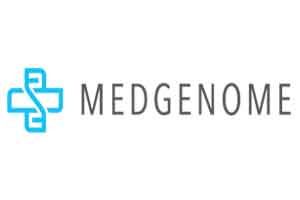Breast cancer is the most common type of cancer affecting women across the globe. Breast cancer is both genetically and histopathologically heterogeneous, and the mechanisms underlying breast cancer development is largely unknown.
[the_ad id=”13701″]
Age is one of the significant risk factors in breast cancer. The incidence is increased by pregnancy but is permanently lowered by high parity. Breast cancer incidence is reduced by early first childbirth and the longer the women breastfeed the more they are protected against breast cancer.
About 5% of breast cancers are found to have an underlying genetic cause and they follow autosomal dominant inheritance pattern. Mutations in two specific tumor suppressor genes BRCA1 and BRCA2 have been implicated in 80% to 90% of all hereditary and breast and ovarian cancers. Ernst & Young report 2015 on cancer states that the low density of diagnostic facilities and the absence of mass screening programs is a major hurdle for timely diagnosis in India.
The breast cancer incidences in India have grown over the years and have steadily increased and as many as 1,00,000 new patients are being detected every year. Histologically, breast tumors can be classified on the basis of the location of origin into ductal tumors, lobular tumors, and other subtypes. Ductal tumors develop in breast ducts and represent 80% of tumors. Lobular tumors develop inside the lobes and they account for 10 to 15% of the cases, while other sub-types represent less than 10% of cases diagnosed per year.
Breast cancers are classified as:
- Ductal Carcinoma in situ (DCIS): This condition is considered non-invasive or pre-invasive breast cancer. DCIS means the cells that line the ducts have become cancerous.
- Lobular Carcinoma in situ (LCIS): In this condition, cancer cells are seen growing in the lobules of the milk-producing glands of the breast, but they hardly grow through the wall of the lobules and hence are non-invasive.
When the DCIS and LCIS become invasive they are termed as Invasive Ductal Carcinoma (IDC) and Invasive Lobular Carcinoma (ILC) respectively. IDC is the most common kind of breast cancer.
Genetics of Breast Cancer
Those who inherit the risk of breast cancer are associated with the type of gene involved. For instance, mutations in the BRCA1 and BRCA2 genes are inherited in an autosomal dominant pattern. Even though breast cancer is common in women, the mutated genes can be inherited either from the mother or father. Mutations in some of the other genes such as PTEN, TP53, STK11, ATM, CDH1, and CHEK2 have also been found to increase the risk of breast cancer .
Diagnosis Solutions
Apart from BRCA1 and BRCA2 gene analysis, hereditary cancer mutation panel covers all the major genes implicated in and associated with breast cancer such as EPCAM, MLH1, MSH2, MSH6, and PMS2, PTEN, STK11, and TP53. It is advisable that women with an abnormal breast cancer gene be screened twice a year as they have a much higher risk of developing cancer in the time between yearly screenings.
Source:

